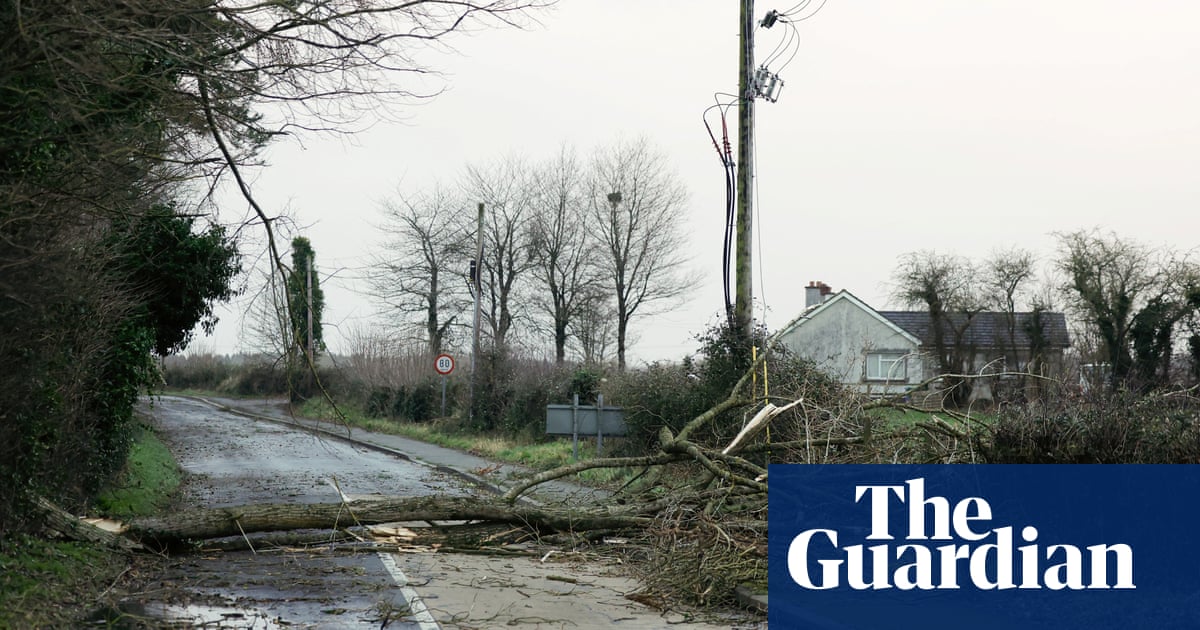More than 715,000 homes are without power in Ireland as Storm Éowyn continues to batter the island of Ireland, with record speed gusts of 113mph recorded in Galway.
The Electricity Supply Board said the extent of the power cut was “unprecedented” and would get worse.
“We anticipate significant further outages as Storm Éowyn continues to track across the country,” the company said. “Extreme, damaging and destructive winds associated with Storm Éowyn have continued to cause widespread and extensive damage to the electricity network across the country with over 715,000 homes, farms and businesses (as at 800am) without power.”
ESB said it could take a week to restore supplies to all homes and premises.
The island is under a red weather alert with Met Éireann warning that the winds, which are moving from the south to the north and east have not reached their strongest yet.
It said that the 183km/h (113mph) had been recorded at Mace Head, County Galway, at 5am, just above the previous record high of 182kmh set in January 1945 in Foynes, County Limerick.
It also reported the mean wind speed record of 131km/h (81mph) set in 1945 in Foynes had been broken during the storm, with up to 135km/h (84mph) at Mace Head at 4am.
The dangerous conditions have prompted authorities to warn people to stay indoors because of risk to life and property from falling trees and flying debris.
Almost 100,000 homes and premises are without power in Northern Ireland and the storm is also battering other parts of the UK.
after newsletter promotion
Multiple incidents of trees blocking roads have been recorded. One passenger who tried their luck heading to Shannon airport for a flight that was cancelled told RTÉ the motorway was deserted apart from fallen branches everywhere.
Emergency services were on high alert and Ireland was preparing for a virtual standstill on Friday, with airports, schools, parks and offices to close and public transport cancelled during the peak hours of Storm Éowyn.
Keith Leonard, the chair of the national emergency coordination group, said the storm would be one of the most dangerous storms to hit Ireland. “We expect this storm to be destructive, dangerous and disruptive. We can expect [gusts] greater than 130km/h inland, which is very, very unusual. It is going to be a damaging, dangerous and destructive weather event.”
He said the winds would bring severe conditions, which would pose a risk to life and property.
The public have been warned to stay at home, to avoid the coast and to have phones and torches fully charged. The ESB said extensive damage to electricity infrastructure was anticipated and widespread power outages expected.
“We are likely to see significant and widespread power outages, so I would encourage everyone to prepare ahead. Make sure phones, torches and laptops are fully charged. Ensure that there are no loose garden furniture or other items on your property that could cause problems in strong winds.”
The number of people losing power already tops the 385,000 figure from Storm Ophelia in 2017. “Our most important message today is that everybody needs to shelter in place for the duration of all red warnings,” said Leonard.
The most dangerous recorded storm in Irish history was Hurricane Debbie. This was not an Atlantic storm but a rare tropical cyclone, which struck Ireland on 16 September 1961. It caused 18 deaths in the Republic of Ireland and six in Northern Ireland.








